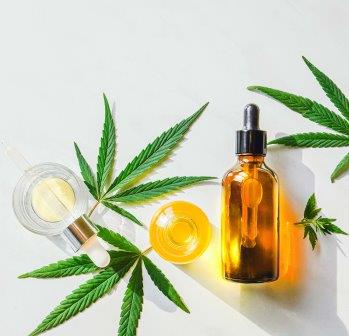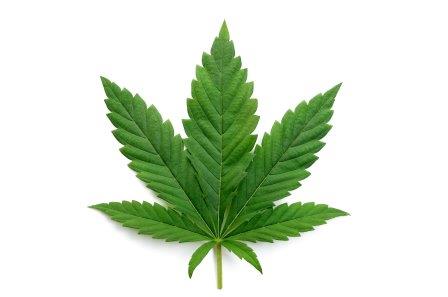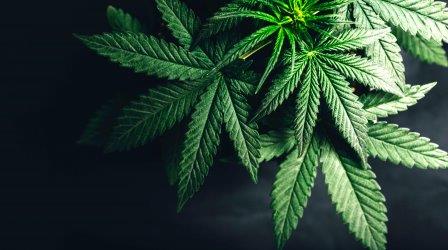Even as several countries have moved towards legalising the medicinal and recreational use of cannabis, the NDPS Act, which clubs cannabis with other more harmful and addictive drugs, sparks outrage in India.
Legalisation has brought more awareness about cannabis in Canadian society. The involvement of the government has made the industry safer,” says Jared Samson, manager of Green World, an authorised cannabis store in Ajax, a town in Ontario, Canada. He feels that everything in this industry must be licensed, starting from the store, salespersons, and products. He then goes on to talk about the evolution of the industry and the various types of products available. “We sell cannabis in various forms, ranging from smoking, vaping, beverages, edibles, topicals,
and lotions,” Samson reveals.
Destiny Gibbs, a long-time consumer of cannabis, which is colloquially called weed, echoes similar sentiments. “We are getting better quality and safe products. We get all the products in tamper-proof packaging.” Though she laments that some people still go to illegal shops to get beyond government regulations, that is, to buy a larger quantity of cannabis than the government-mandated 30 gm of dried cannabis or its equivalent.
The above instances reveal interesting outcomes of the initiative by Canada to legalise cannabis in 2018. The Canadian government had a number of goals while legalising weed. Among them were keeping hard drugs away from the youth, taking profits away from criminals and protecting public health by regulating the use of cannabis. According to the Canadian Cannabis Survey 2020, only six to eight percent of Canadians reported obtaining cannabis from illicit sellers. This is definitely an achievement as it is evident that people have moved to legal sources as far as the procurement of cannabis in Canada is concerned. The study also unearthed that illegal cannabis products were contaminated with microbes and pesticides.
According to the same survey, 27 percent of participants reported having used marijuana in the past year — an increase from 22 percent in the first cannabis survey conducted in 2017. There is an increase, but it is not alarming. It dispels the apprehension that legalising cannabis would make a greater percentage of the country’s population users. On an average, in 2019, six percent of Canadians aged 15 or older
reported using cannabis daily or almost daily — about the same level as in 2018 (5.9 percent).
Before legalisation of cannabis in Canada, there was a concern that there would be an increase in the number of people driving after consuming cannabis and this would increase road fatalities. According to the same survey, the likelihood of reporting driving after cannabis use did not change with legalisation of the drug. For example, in 2019, 13.2 percent of cannabis users in Canada with a valid driver’s licence reported driving within two hours of using cannabis — unchanged from 2018.

GLOBAL SCENARIO
The ingredients obtained from the cannabis plant are known by multiple names around the world — marijuana, Mary Jane, weed, pot, hemp and grass. Various countries, apart from Canada, have legalised various forms of the cannabis plant for recreational use. These countries include Mexico, South Africa, Uruguay, Georgia, and the Australian capital region. In the US, 18 states, two territories, and the District of Columbia have allowed or at least decriminalised use of cannabis, though it is still banned at the federal level. The medical use of cannabis is allowed in even more countries.
In many countries, cannabis has been found to be of medicinal and industrial value. Its various forms have been found to be of use in managing various diseases like Alzheimer’s, Amyotrophic Lateral Sclerosis (ALS), epilepsy and seizures, among others. Found to be an excellent muscle relaxant with an ability to lessen tremors in Parkinson’s disease, marijuana is also used to manage nausea and can be helpful for cancer patients after chemotherapy.
Research is on-going on cannabis usage. Two compounds found in the cannabis plant, cannabigerolic acid and cannabidiolic acid, have the ability to fight the novel coronavirus! Oregon State University has recently conducted a study in a lab setting and found these two chemicals can prevent the Sars-CoV-2 virus from entering cells that typically line internal organs and the skin.
INTEGRAL TO INDIAN TRADITION
There is evidence that cannabis has been used for medicinal purposes in India for more than 2000 years. Sushruta Samhita, the ancient Sanskrit text on medicine and surgery, documents the use of cannabis for treating respiratory ailments, diarrhoea and acute pain. The same fact finds mention in the Ashtadhyayi of Panini from 2,300 years ago.
In India, cannabis is available under different names like charas, bhang, and ganja. While bhang is a paste derived from grinding cannabis leaves and stems together, ganja is made from dried flower buds of the plant. Charas is a resin that is obtained by rubbing cannabis flowers for hours.
Sadhus and yogis belonging to Shaivite and Shaktiya cults have been known to use either cannabis or opium or both to induce concentration of the mind for meditation on the Supreme Being. Lord Shiva is described as a cannabis user, and known as the ‘Lord of bhang’. Bhang, prepared in different forms, has been utilised in religious rituals. In some parts of India, bhang prepared in the form of a syrup is consumed on festive occasions such as Holi and Shivaratri.
MUCH-ABUSED LEGISLATION
The use of cannabis in India is regulated by the Narcotic Drugs and Psychotropic Substances Act (NDPS Act) of 1985. But this law has sparked an intense debate after the involvement of Bollywood actors has often surfaced in many drug cases. Even though it is a pity that certain media houses got involved in such page three equivalent gossip journalism, it indeed brought an important topic to the fore, that is, much-needed reform of the NDPS Act.

The law, in its current form, aims to prohibit “the manufacture, production, trade, use, etc. of narcotic drugs and psychotropic substances”, except for medical or scientific purposes. Punishment for possessing such drugs may range from one to 10 years in jail, depending upon the quantity possessed.
The biggest concern with this law is that, unlike most other laws in India, it shifts the burden of proof on the accused. Innocent unless proven guilty is not applicable here! The law does not even require personal possession of drugs during the arrest. It gives law enforcers ample scope to put up charges against someone.
The law puts drugs like marijuana in the same group as hard drugs like cocaine, heroin and meth. By clubbing cannabis with more harmful and addictive drugs, this law inadvertently tends to encourage the illegal drug trade to focus on hard drugs as the punishment is the same whereas the monetary gain from heroin smuggling is much more than from cannabis. Moreover, an outright ban on all sorts of narcotic drugs in India, except for medical or scientific purposes, encourages underground drug peddling and siphoning of revenue into other illegal activities, including terrorism. Further, this law puts huge pressure on the already strained law enforcement agencies in India. Instead of running after drug smuggling involving large amounts, our police force is often seen busy catching personal consumers of cannabis and small-time peddlers of it. When the Indian media was busy covering the Aryan Khan case, precisely at that time nearly 25 kg of heroin was seized from a container in Nhava Sheva Port in Navi Mumbai! We need to focus on the right priorities as no nation has infinite numbers of police personnel.
Moreover, criminalising personal consumption of cannabis puts a stigma on the victims and leads to their alienation from society. Instead of helping, it causes hindrance in the process of rehabilitation of drug users. A criminal record poses serious challenges in various aspects of a person’s future life even after the person has discontinued use of cannabis.
PERILS OF CANNABIS
The use of cannabis does have its share of potential harmful effects. When used long-term, it can have very detrimental effects and can even cause brain damage. So, certainly, cannabis is not something that should be encouraged for random use or for recreational purposes. But that is applicable for any addiction like tobacco and alcohol.
LEGALISATION WITH REGULATION
We need to understand that in most cases, attempts to ban something give a fillip to its underground economy. Eventually, it causes more harm than good to society in the long run. We can draw an analogy here from the recent hooch tragedy in Bihar where 30 people died from consuming spurious liquor in November 2021. It was attributable, among other things, to the enforcement of Prohibition in the state.
Before legalising or decriminalising cannabis in India we have to ensure that there is strict government regulation so that it does not become an unbridled private profit-making business. We can learn from the Canadian example here as well. In the province of Ontario, cannabis sale is run by public-private joint venture with the Ontario Cannabis Retail Corporation, a public company, commanding the legal monopoly over online retail of recreational cannabis to consumers and wholesale distribution to privately operated brick and mortar retailers throughout Ontario.
In colonial India, cannabis was not banned but the British had imposed a tax on different byproducts of cannabis to discourage its excessive use.
We have to appreciate the fact that India has historically been a liberal society and has taken the lead in terms of science and culture for centuries. We also have the ability to rectify our past mistakes and take scientific as well as informed steps regarding the future. One such step can be legalising cannabis usage in India through an effective, well-conceived regulatory regime.
By Samudra Roychowdhury
The writer is an IT professional, passionate about Indian history, and the founder of www.indicvoices.com.








